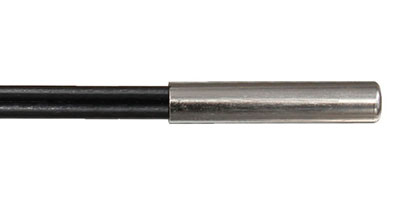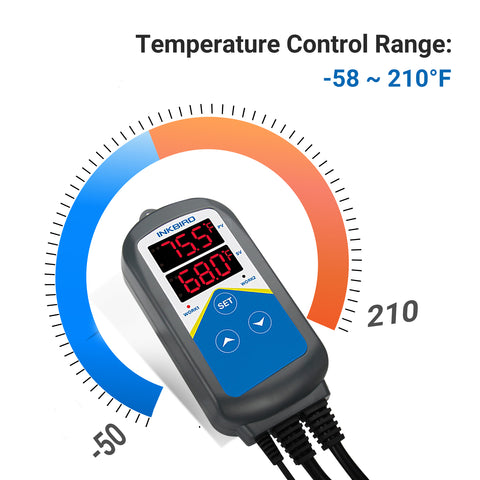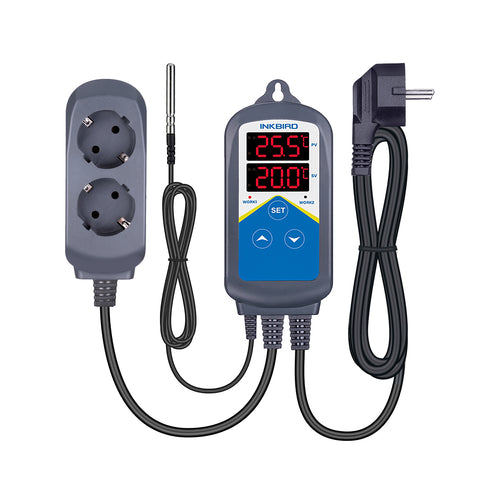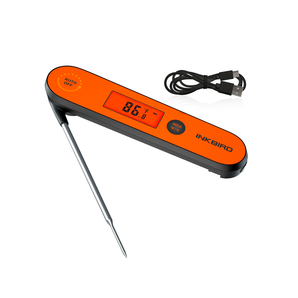Imagine waking up one morning only to discover that all your fish are floating upside down at the top of your aquarium.
You feel the water only to discover that it is boiling. You have cooked your fish!
This scenario is more common than you might think. All it takes is for your heater to remain on longer than it should, and you risk overheating your fish.
That’s where an aquarium heater controller comes in.
This important device may just save your fish’s life. And today, I am going to teach you all about it.
What is an aquarium heater controller, and how does it work?
As the name suggests, an aquarium heater controller allows you to precisely regulate the temperature of your fish tank – much more accurately than just using an aquarium heater alone.
Think of a temperature controller as an external thermostat specifically for your fish tank.
There are two types of aquarium temperature controllers:
- Pre-wired temperature controller – Comes as a complete unit. Simply plug your heater in, and you are good to go. No more effort required!
- DIY temperature controller – As the name suggests, you buy the parts separately and create your own temperature controller. Electrical knowledge is recommended if attempting to create your own.
While the exact style of an aquarium temperature controller will vary according to the brand, it will typically consist of three distinct parts…
-
Controller

The controller consists of a digital LCD screen and buttons that you can use to set the desired temperature.
This is the brains of the equipment. The controller monitors the water in your aquarium to ensure that it is always at the correct temperature.
-
Socket

Pretty self-explanatory. This is where the plug from your aquarium heater goes.
Some temperature controllers come with two independent outlets – one for a heater and another for a chiller.
These are called dual temperature controllers, and they allow the controller to heat the water when it’s too cool and chill the water when it’s too hot.
-
Temperature sensor probe

The waterproof probe sits inside your aquarium and measures the temperature of the water.
Be mindful that if you have a saltwater tank, you will want a probe that is resistant to corrosion.
How does the temperature controller work?
Without boring you with the complicated technical details, how a temperature controller works is actually very simple.
Step 1: Set your temperature
Using the controller, you set the desired temperature. In this case, I am going to set it to 79 degrees Fahrenheit (26 degrees Celsius) – because that’s what my angelfish prefer.

Step 2: The controller reads the temperature

Using the sensor probe inside your tank, the temperature controller will read the temperature and compare it to the temperature that you set.
Step 3: The controller takes action

If the temperature is colder than what you have set, the controller sends power to the sockets, which turns on your heater.
Once the temperature is reached, it shuts the heater off until the temperature drops again.
That’s all there is to it!
Why you need an aquarium heater controller?
It’s very likely that the aquarium heater you use already has a thermostat inside it. And when it reaches a certain temperature, it turns itself off.
So then, why do you need a temperature controller for your aquarium?
Well, it turns out that there are two good reasons…
-
Heater malfunction
Well, the reality is that heaters fail.
Your heater could fail due to poor manufacturing, incorrect installation, user error, electrical fault or any other number of reasons.
Yes, the chances of your aquarium heater failing are low…
But if it does fail, your tank will overheat, and you can kiss your tropical fish, plants and corals goodbye.
In fact, if you frequent any aquarium forums, you will find countless stories of how hobbyists have come home to fish soup.[1, 2, 3]
It’s an expensive accident that can be prevented with an aquarium temperature controller.
Once the water reaches the temperature you set, the controller will kill the power to your heater, turning it off.
If your aquarium heater also has a thermostat, then the temperature controller is an extra layer of safety.
-
The thermostat and sensor are better quality
I have to hand it to modern aquarium heaters – they manage to squeeze a thermostat, temperature sensor and heater element into a tiny product that barely takes up any room in your tank.
But the downside is that these components are not as accurate. If you need a narrow temperature range for breeding or have very sensitive fish, then you need a more accurate way to determine the temperature of the water.
That’s where a controller comes in – offering a precise measurement of the water temperature.
How do you choose the right heater controller for your aquarium?
To narrow down the ideal temperature controller for your aquarium, you need to answer the following questions:
-
What heater do you need to control?
As you are probably aware, the power of your aquarium heater is measured in watts (W).
You can find the wattage rating of your heater printed on the box or in the manual of your aquarium heater.
This rating needs to fall in line with what the temperature controller outputs, otherwise the controller may fail.
Let’s say the temperature controller has an output of 1000W. This means that it can control one 1000W heater, two 500W heaters or any combination of heaters adding up to 1000W.
But if you need the temperature controller to run an 1100W heater, you risk the temperature controller failing.
So, you want to make sure that your heater wattage is equal to or less than the output wattage of the temperature controller.
Note: Most temperature controllers are more than capable of handling heaters for smaller tanks – this is mostly an issue for larger tanks that need bigger heaters.
-
Is your tank freshwater or saltwater?
Good news for those of you with freshwater tanks – you can use any waterproof probe to measure the temperature.
But those of you with saltwater tanks may experience some grief. Yep, that salt water quickly corrodes most metals, including your temperature probe.
Fortunately, many temperature controllers allow you to swap out the probes. Simply buy a temperature probe that is saltwater friendly (titanium is a good choice), and you are set.
If swapping out the sensor isn’t an option, try a DIY solution. This was recommended to me by a couple of reef tank enthusiasts.
You can either seal the probe in an epoxy or cover it with heat shrink. I have not tried either of these solutions and would love to hear from any of you who have had success with these methods.
-
Do you also need to cool your tank if it gets too hot?
A temperature controller that performs just one function, such as heating, is called a single stage temperature controller.
But you can also buy temperature controllers that allow you to both heat and cool your tank.
These temperature controllers are referred to as dual stage temperature controllers.
How a dual stage temperature controller works is actually really simple.
Whatever you plug into the cooling socket will activate if the temperature in your aquarium is above the preset temp.
And, anything that you plug into the heating socket will activate if the temperature falls below your preset temp.
This allows you to keep your tank in an extremely narrow temperature range regardless of the temperature outside the tank.
Moreover, to learn what to do for aquarium in winter, read this interview: Dos and Don'ts for Aquarium in Winter
What is the best aquarium heater controller?
Here we recommend:
INKBIRD Temperature Controller ITC-306T
INKBIRD Dedicated Aquarium Temperature Controller ITC-306A
Source: FishLab
























































